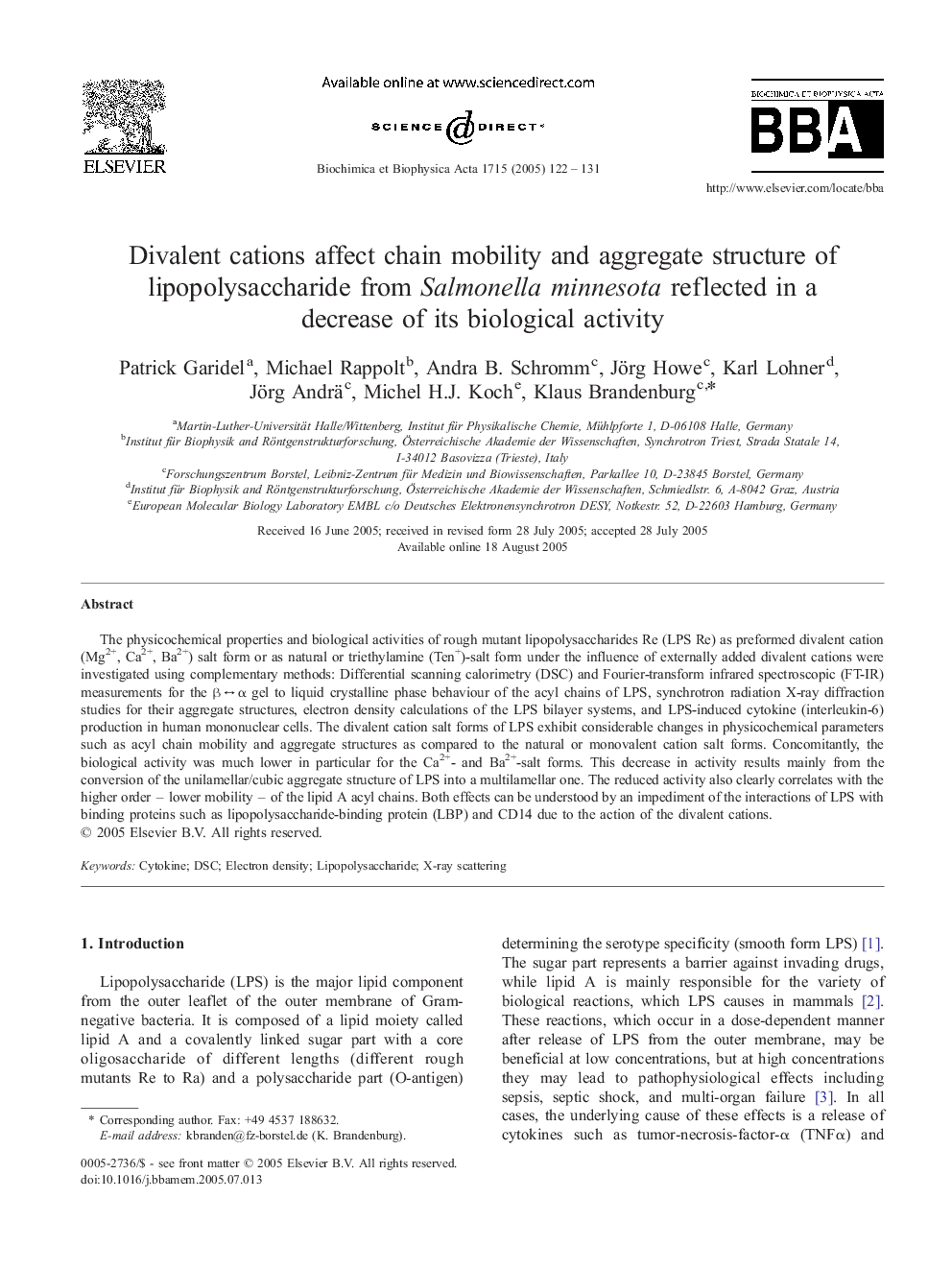| Article ID | Journal | Published Year | Pages | File Type |
|---|---|---|---|---|
| 10798130 | Biochimica et Biophysica Acta (BBA) - Biomembranes | 2005 | 10 Pages |
Abstract
The physicochemical properties and biological activities of rough mutant lipopolysaccharides Re (LPS Re) as preformed divalent cation (Mg2+, Ca2+, Ba2+) salt form or as natural or triethylamine (Ten+)-salt form under the influence of externally added divalent cations were investigated using complementary methods: Differential scanning calorimetry (DSC) and Fourier-transform infrared spectroscopic (FT-IR) measurements for the β â α gel to liquid crystalline phase behaviour of the acyl chains of LPS, synchrotron radiation X-ray diffraction studies for their aggregate structures, electron density calculations of the LPS bilayer systems, and LPS-induced cytokine (interleukin-6) production in human mononuclear cells. The divalent cation salt forms of LPS exhibit considerable changes in physicochemical parameters such as acyl chain mobility and aggregate structures as compared to the natural or monovalent cation salt forms. Concomitantly, the biological activity was much lower in particular for the Ca2+- and Ba2+-salt forms. This decrease in activity results mainly from the conversion of the unilamellar/cubic aggregate structure of LPS into a multilamellar one. The reduced activity also clearly correlates with the higher order - lower mobility - of the lipid A acyl chains. Both effects can be understood by an impediment of the interactions of LPS with binding proteins such as lipopolysaccharide-binding protein (LBP) and CD14 due to the action of the divalent cations.
Related Topics
Life Sciences
Biochemistry, Genetics and Molecular Biology
Biochemistry
Authors
Patrick Garidel, Michael Rappolt, Andra B. Schromm, Jörg Howe, Karl Lohner, Jörg Andrä, Michel H.J. Koch, Klaus Brandenburg,
